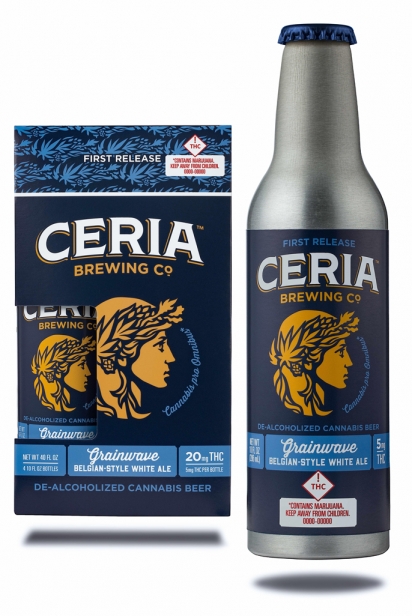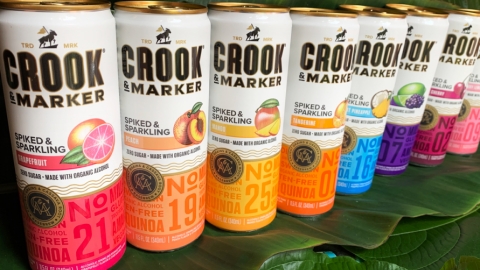Brewing Outside the Box
To combat the trend, breweries are seeking new and innovative products. For the alcohol-imbibing consumer, there’s always been competition between beer, wine and spirits, and in recent years, beer is overall on the decline. It’s by a small margin, but when you look the overall number, it makes up a lot of cases and kegs. This is driven by a variety of factors, including an aging consumer, a more health- and calorie-conscious society, the legalization of marijuana in certain markets and a more adventurous, less brand-loyal millennial consumer.
Some breweries are diving into the flavored malt beverage (FMB) market. It’s been reimagined countless times with the introduction of products like Zima, Mike’s Hard Lemonade, Smirnoff Ice and Not Your Dad’s Root Beer. Brands like White Claw have gained huge market share with the introduction of spiked seltzers, which have low sugar and calories and about the same alcohol as a beer. These have attracted weight- and health-conscious drinkers, predominately millennials. Locally, MIA Brewing Company introduced HRD WTR a couple of years ago, which offers South Florida-inspired flavors like Pineapple Coconut and Cucumber Lime. CANarchy, the company that owns Cigar City and Oskar Blues, is rolling out Wild Basin Boozy Sparkling Water, which “checks in at a compelling 100 calories with 0g of sugar and only 1g of carbs.” It’s gluten-free and contains no artificial ingredients. Like LaCroix with a kick, these offerings are healthy and refreshing way to drink casually.
Craft Beer Lite
To attract those health-conscious drinkers, some breweries are introducing craft beers that are lighter in alcohol and calories. Lagunitas has reformulated their Daytime IPA to bring it under the 100-calorie mark, a 4% ABV Session IPA that’s their response to Michelob Ultra. Dogfish Head, known for continual innovation, has released Slightly Mighty Lo-Cal IPA, which “has all the flavor and tropical aromas of a world-class IPA,” with 95 calories, 3.6g carbs, 1g protein and 0g fat per serving. They’ve incorporated monk fruit into this beer, which is said to deliver body and complexity without adding calories or carbs. Heineken takes this lite touch a step further by releasing Heineken 0.0, a non-alcoholic version of their iconic lager. Their website speaks to this consumer: “Now You Can – At Work, On a Break, At Lunch, Before the Gym.”
Boozier Booch
Kombucha is a growing beverage category that many non-soda drinkers enjoy for its flavor and digestive benefits. While kombucha naturally has a nominal amount of alcohol, some breweries and kombucha producers are making a beer-kombucha hybrid. Rogue Beer released Kulture Clash, a collaboration with Townshend’s Brew Dr. Kombucha, that blends their beer with kombucha and aims to reach both groups of consumers. A handful of kombucha companies, including Boochcraft, Unity Vibration and Kombrewcha, are using new recipes and alcoholic-tolerant yeasts in their normal process to create brews that range from 3.2 to 7% ABV, compared to the normal amount, which is below 1%. In the coming year, One Kombucha (Raw Brewing Co.) in Pompano Beach is currently expanding operations and will be brewing beer and alcoholic kombuchas.
The Cannabis Crowd
How does recreational marijuana use affect consumer drinking habits? Bring on the CBD-infused beers – Coalition Brewing, of Portland, Oregon, and Dad and Dudes Breweria of Aurora, Colorado, are already there. New Belgium Brewing released Hemperor IPA and SweetWater Brewing debuted its 420 strain G13 IPA, both of which use a mix of hemp terpenes to deliver a dank flavor reminiscent of marijuana. Because all beer recipes must be approved by the Federal TTB, breweries in states with legal recreational marijuana face legal hurdles as they seek to incorporate THC into their beers.
To combat this, brands like CERIA Beverages and Two Roots Brewing removed the alcohol from their beers and replaced it with THC. Lagunitas Brewing Company released a THC-infused sparkling water called Hi-Fi Hops in California, sold in dispensaries. In October 2017, Constellation Brands, owner of Corona, Ballast Point and Funky Buddha Brewery, made a massive investment in the marijuana industry, buying a 9.9% minority stake in the $2 billion Canadian medical marijuana company Canopy Growth. Craft breweries are even being purchased by marijuana companies. In February, Cannabiniers, the company behind the Two Roots line of CBD- and THC-infused non-alcoholic craft beers, signed letters of intent to acquire four craft breweries, including a “top-20 privately held brewery based in California.”
More to Come
The ingenuity, creativity and ambition of craft brewers is endless. As the industry evolves they will continue to find new ways to make beers and products that consumers are looking for. Craft Brew Alliance, owner of Kona, Widmer and Wynwood Brewing, has even launched a business unit designed to explore the future.
The pH Experiment is “dedicated to creating, incubating and accelerating growth with new products and experiences that put drinkers’ needs first.” Their first offering for the market is an Aperol Spritz-inspired beverage called Pre Aperitivo Spritz, a 6.6% ABV dry, botanical bubbly with an herbaceous bitterness that stays unapologetically true to a classic Italian aperitivo.
How far will craft brewers go? If there is something delicious to be had and an opportunity to grow, a craft brewer will find it.








